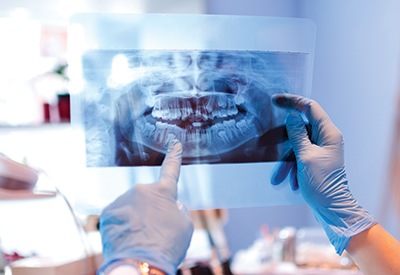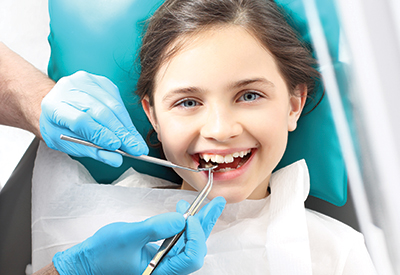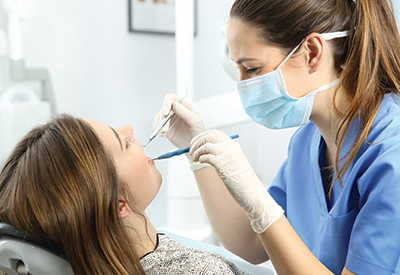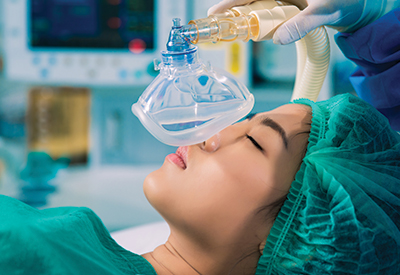
İstanbul Galata Üniversitesi Diş Hekimliği Fakültesi Hastanesi
Periodontology

Periodontology is a branch of dentistry that examines the tissues surrounding teeth and dental implants (gums, jawbone, etc.), deals with the diagnosis and treatment of diseases affecting these tissues, and conducts scientific studies in this field.
Treatments applied in the Department of Periodontics can be separated into two categories: non-surgical and surgical.
Non-surgical treatments:
- Scaling (Dental professional cleaning),
- Subgingival curettage (deep scaling)
- Fixing loose teeth (splint applications)
Periodontal surgical treatments:
- Surgical treatment of gum recession and enlargement
- Surgery to treat tissue loss due to gum diseases
- applications (flap operations)
- Bone grafts and membrane applications
- Soft tissue grafts (free gingival grafts, connective tissue grafts)
- Gingivectomy and gingivoplasty applications for gum aesthetics
- Implant applications
- Treatment of diseases around the implant (Peri-implantitis treatments)
How is gum treatment done?
In the first stage of the treatment, the disease-causing accumulations accumulated on the teeth are removed. Dental tartar is professionally removed with special tools. Special oral care training is given to the individual to improve their habits. In case of mild inflammation (gingivitis), this treatment alone may be sufficient. For more severe infections, (inflamed, enlarged or receding gums, bone resorption between the teeth and gums) periodontal surgical procedures are performed under local anesthesia and, if necessary, such as bone grafts and membranes auxiliary biomaterials or blood and tissues taken from the patient are placed in the defects. After all these applications patients are checked at regular intervals to support their gum health. Periodontal frequent check-ups are part of the maintenance of treatment.
What are the reasons for gingival diseases?
A soft bacterial layer called microbial dental plaque accumulates on tooth surfaces. Types of bacteria that cause disease when not cleaned with routine oral care practices multiply. These bacteria and some substances produced by them cause inflammation and resorption of the jawbone surrounding the teeth. When microbial dental plaque is not removed, it hardens and turns into dental calculus. Since it has a rough structure, it causes more plaque accumulation and accelerates the progression of the disease. Similarly, improperly made prostheses, orthodontic appliances that cannot be cleaned, teeth with untreated caries, fractured teeth/dentures, overhanging or missing fillings also accelerate the accumulation of microbial dental plaque. Since it facilitates gum disease, it paves the way for gum diseases. On the other hand, smoking and diseases such as diabetes and genetic factors increase the risk of gum disease.
What are the types of gum diseases and which treatments are available?
Gum diseases do not cause much pain. For this reason, even if the patients have no complaints, it is recommended that they do not skip their dentist check-ups. Gum diseases begin with the inflammation of the gums (gingivitis) and if left untreated, it may progress to periodontitis. The first symptom of gum disease is bleeding gums. Gum enlargement, redness and recession may be observed. However, for heavy smokers even with advanced gum disease, bleeding may not be observed. Due to the progression of the inflammation, teeth grow in length, bad breath, space in the teeth shifting, opening between the teeth and, as a result, tooth loss may occur. When bleeding gums, one of the most important and first noticed symptoms of gum disease is seen, a doctor should be consulted.
How can you tell if your gums are healthy?
The appearance of healthy gums is light pink in color, firm in substance, free of edema, and taper off like a knife edge on the surface of the teeth. It also does not bleed spontaneously or during brushing or flossing.
Treatments Applied in the Periodontology Department
Scaling: Ultrasonic removal of plaques and tartar accumulated on the teeth and causing disease. Calculus is removed with tools and special hand instruments. This procedure usually does not require anesthesia and if there is no need for further treatment, it can be done in a single session.
Subgingival Curettage/Root Planning: In more advanced gum infections, inflammation of the gums and teeth are removed under local anesthesia. Disease-causing accumulations under the gingiva are removed with special tools and non-surgical methods.
Gingivectomy/Gingivoplasty: Enlarged or aesthetically impaired gums are removed using laser or surgical methods.
Flap operation: In case of inflamed, enlarged, or receding gums due to periodontitis between the teeth and gums a flap operation might be performed. Local anesthesia is performed, and inflammatory tissues are removed and, if necessary, adjuncts such as bone grafts and membranes using biomaterials or blood and tissues taken from the patient are placed. It is a periodontal surgical procedure. Implant Placement: Placing implants into the jaw bones consists of two simple surgical procedures. These procedures are simple and usually performed under local anesthesia. The first procedure is to ensure that the implant is firmly creating a slot in the jawbone where it will be screwed and inserting the implant into this slot placement. The implant remains embedded in the jawbone for an average of 3 months. During this healing phase, the implant and bone fuse. According to implant or bone type, implant remains within the jawbone by being closed or left open. Meanwhile, patients can use their former prosthesis or temporary crown-bridge. The implant is tightly fused to the bone. For a second surgical procedure, it can be opened to create a healthy and aesthetically pleasing solution around the implant neck. Healing caps are attached to ensure gum formation. At this stage, your dentist will select and place the superstructures to which the teeth will be bonded and will also prepare the crown-bridge or restoration type. Periimplantitis Treatment: It is possible to treat inflammation in the tissues around the implant in certain cases. The treatment choice depends on the amount of tissue loss present. In some cases, treatment of gum and bone tissue can be done without surgery. It can be achieved by supporting oral care methods. In some cases, the area is surgically opened and cleaned with special methods and the defects are prepared. Tissue regeneration and filling are aimed by repairing with biomaterials. Laser applications can also be beneficial at various stages. In cases where the tissue destruction is too advanced, removal of the implant from the area may prevent infection. If the area is to be re-implanted, the defect is augmented with the necessary biomaterials.

Oral, Dental, and Maxillofacial Surgery
Oral and maxillofacial surgery, a specialized field situated at the crossroads of dentistry and medicine, deals with various surgeries within or ar
Detaya Git
Oral, Dental, and Maxillofacial Radiology
Department of Oral and Maxillofacial Radiology, where intraoral and head-neck region tissues and organs are systematically examined, and all change
Detaya Git
Pediatric Dentistry (Pedodontics)
Pedodontics is a branch of dentistry dedicated to children. It aims to establish oral and dental health at an early age by focusing on the preserva
Detaya Git
Orthodontics
It is a branch of dentistry that undertakes the diagnosis, treatment and prevention of crowded teeth, deviations in the jaws and facial irregularit
Detaya Git
Endodontics
The diagnosis, treatment, and prevention of illnesses and injuries affecting the dental pulp and adjacent tissues are the main goals of the special
Detaya Git
Prosthetic Dental Treatment
It is the branch of dentistry that deals with the identification, planning, diagnosis, rehabilitation, and upkeep of patients' comfort,
Detaya Git
Restorative Dental Treatment
Restorative Dentistry is the department that aims to repair material losses in dental hard tissues caused by caries, abrasions, or fracture
Detaya Git
Periodontology
Periodontology is a branch of dentistry that examines the tissues surrounding teeth and dental implants (gums, jawbone, etc.), deals with the diagn
Detaya Git
Anesthesiology and Reanimation
Istanbul Galata University Dental Hospital has a fully equipped operating room where anesthesia and reanimation can be implemented. This procedure
Detaya Git
